Preseason Advice: Stop Training to Pass a Fitness Test and Train to Become a Better Soccer Player
Full disclosure: I never jogged two miles around a track.
I hate long-distance running, so I avoided it like the plague during my 20-year soccer career.
I’m proud to say I hardly did any long-distance work. I guess I turned out okay.

This isn’t to boast but rather to prove that soccer players don’t need long-distance runs to reach a high level.
The extent of my long-distance running was sprinting a mile in under six minutes. I just wanted to get it over with, and I wanted it to be intense and actually push my lactic threshold.
I used to have competitions with my college soccer teammates at Johns Hopkins University who could sprint a mile the fastest.
We would text each other, “I got a 5 minute and 55 seconds!” or “I got a 5 minute and 41 seconds! Beat you! HA!”
It actually made mile runs fun because we felt we were reaping the benefits of such a high intensity.
My best mile time was 5 minutes and 40 seconds. To say my legs felt like they were going to fall off afterward is an understatement.
The point is that I hated running the mile. So, I decided to sprint it like a cheetah instead of trotting it like a pony.
Stop Long Slow Distance Running
Most of my soccer career was far from long-distance training. I mainly did hill sprints, resisted sprints, and tempo full-field runs. I had a short stint of varsity track as a freshman in high school in the 200 meter. Overall, I loved sprinting and fast-twitch outputs.
Thank goodness, because soccer is a game of explosive bursts, then periodic rests.
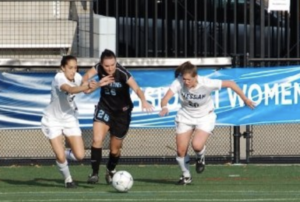
It requires that “separating step” to blast out of a double team, blow by an opponent, make that explosive counterattack, and bolt back on defense.
In fact, these explosive actions are what make the game of soccer exciting.
No one ever said, “Wow! Look at that player jog!”
Fitness Tests Need to Be Cancelled
The timed 1-mile and 2-mile runs need to go. If people are still doing this today, they are way behind the curve.
Yes, players walk and jog for a good percentage of the game, but goals happen during explosive actions. A sprint onto a cross, a vertical jump to a header goal, a one-on-one defeat, a quick turn with a back-to-goal, and a rocketed strike. A sprint down the wing.
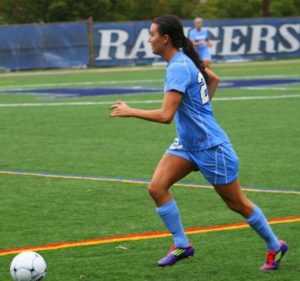
Fast twitch. Not slow twitch.
Fitness tests bother me because they often do not assess the player’s ability to handle the demands of the game. For starters, the energy systems most tests cover are aerobic or glycolytic. There’s no speed (4-6 seconds) or repeated galactic efforts (8-10 seconds) that mirrors the game.
This causes a huge issue in player development because players are training to be good at a fitness test rather than the game.
A common scenario at the youth club and college levels is that players are handed a summer fitness packet from their coach with a random cacophony of runs, no workload progression, and no calculation based on summer vacation dates or weeks away.
Players are at an increased risk of injury when the running workload is random and not appropriately progressed over the summer months.
I’ll give an example.
For my summer off-season conditioning program athletes, each week, they do a different number of sprints. The workload is customized to the individual athlete, and there’s a plan in place.
Athlete A may have 8 sprints, while Athlete B will be at 10 sprints one day. This is because Athlete A was on vacation the week prior, and I’m not going to spike her workload from 6 to 10 sprints when she returns. I’m going to keep her on her own progression and have her go from 6 to 8 sprints so she doesn’t risk injury. One of the biggest causes of musculoskeletal injuries is huge spikes in workload that the athlete hasn’t been prepared to handle.
Adding on to the disaster, players get stressed about passing the fitness test at the end of summer, so they train in the precious summer months to pass, rather than utilizing that time to train for the game.
It’s downright tragic.
One summer, I had a girl’s dad express concern to me: ” We are worried your program doesn’t train her for the two-mile run, and she will fail and not get playing time.”
My response: “I’m not training her for a two-mile run. I’m training her to play soccer.”
And it’s the truth: you can’t train for two miles and soccer at the same time. The demands are totally different. With its cognitive, speed, and galactic demands, training for soccer requires a lot of time and consistency.
You have to pick one – train for the two miles or soccer. You can’t chase two rabbits because you’ll end up catching none.
Just because a girl thrives at the two miles and passes the fitness test doesn’t mean she will get playing time.
When I played at Johns Hopkins University, I had a teammate who outran everyone else on the long-distance running test, but she hardly got playing time because she wasn’t as good at soccer as the rest of us.
At the end of the day, coaches want to win games. The players that can play the game will see the field.
How to Train for Soccer
It’s simple. As Strength Coach Mike Boyle says, “Fill the buckets that are empty.”
The majority of soccer players already have an excellent aerobic base due to the culmination of practices, skills training sessions, and games from over 9 months out of the year.
I’d also argue that most soccer players have “detonated their glycolytic bomb,” as Coach Mike Whiteman from the Riverhounds ECNL would say.
This means they’ve been run extra by their coach. They have done anywhere from 60 seconds to three minutes straight of sprints with no rest. While it may feel like they worked hard, it’s actually unproductive. It burns. Muscles are only broken down more on top of what just happened at practice. There’s no duration and intensity transfer to the game. So, what adaptation were these coaches trying to achieve with these drills?
It’s of better interest to give the empty buckets some water: speed, alactic efforts, and strength for the health and performance of the player.
True speed training is going to the max effort (100% speed) for over 20 meters in distance and resting for five minutes in between sprints. Players need to train to be fast twitch. They need to give their bodies the extreme stimulus that is running an all-out sprint for four to five seconds. Where most soccer players fail when it comes to speed is actually training the phosphocreatine energy system (emptying the tank on a 30-yard sprint) with full recovery in between reps. Yes, you must rest the full five minutes OR MORE to build true speed.
Alactic efforts are sprints that last 8-10 seconds in length (shorter tempo runs 50-80 yards in length at 80-90% speed). To make these repetitive efforts hard progress the rest time from 90 seconds down to 30 seconds.
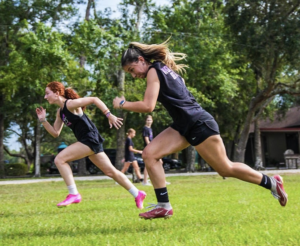
Strength is making time to get in the gym and load the muscles with a new stimulus other than soccer. Yes, quadriceps will develop from the change-of-direction movements in practice, but to really get the legs stronger, they need a new load stimulus from a dumbbell, barbell, or hex bar to adapt and strengthen over time.
The hamstrings, for example, are the conductors of the lower body, and they must be robust for the game’s max velocity efforts.
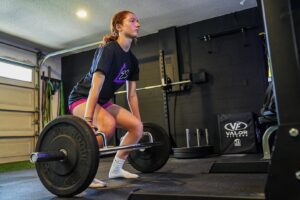
Some of my favorite strength movements for soccer players are upper body pulls (dumbbell rows or strict chin-ups), hip extension movements (deadlifts and kettlebell swings), knee flexion movements (stability ball curls or heel walkouts), and single leg movements (pistol squats or split squats with dumbbells). They are simple.
There are hundreds of other things players should do first before doing long-distance runs and trying to pass a meaningless fitness test:
- Play pick-up soccer
- Play 1 v 1’s
- Get conditioning within small-sided skills sessions
- Be best friends with your ball at home (wall ball, juggle, touches DAILY)
- Train speed at minimum 2x a week
- Do alactic efforts for conditi0ning, 8-10 seconds in length to mirror the duration and intensity of the game
- Strength train at minimum 2x a week
- Go to the grocery store and buy red meat so you meet your daily creatine, amino acid, B vitamin, zinc and iron needs for repetitive, explosive outputs and faster recovery times
That’s it.
Gone are the days of becoming the best at a timed mile. Enter the days of being the best on the pitch.
ABOUT THE AUTHOR
Erica Suter is a former college All-American soccer player from Johns Hopkins University. She also was inducted into the Johns Hopkins Athletic Hall of Fame in April of 2024 for being an impact player who forever changed the women’s soccer program.
Suter is giving back to the game and to female soccer players. She is a full-time performance coach with a Master of Science in Performance Enhancement. She helps girls with speed, agility, strength, and conditioning development and has been training girls for over 12 years in the ECNL, GA, and NPL.
Her players have gone on to play college soccer at UNC, University of MD, Pittsburgh, Towson University, University of Charleston, MIT, Johns Hopkins, Carnegie Mellon, Rutgers, and more.
Follow Erica on Twitter: @fitsoccerqueen
Check out her podcast: The Soccer Queens Podcast
WORK WITH ERICA:
Book a remote training consult HERE
Speaking Engagements with Erica for Your Female Athlete Teams (in person or zoom)
To book, email me at: fitsoccerqueen@gmail.com

GET ERICA’S BOOK FEMALE ATHLETE HIGH PERFORMANCE HERE
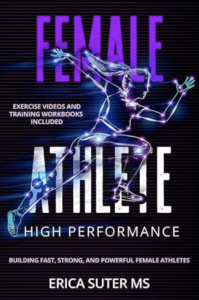
_
GIRLS SOCCER NETWORK: YOUR SOURCE FOR GIRLS SOCCER NEWS












